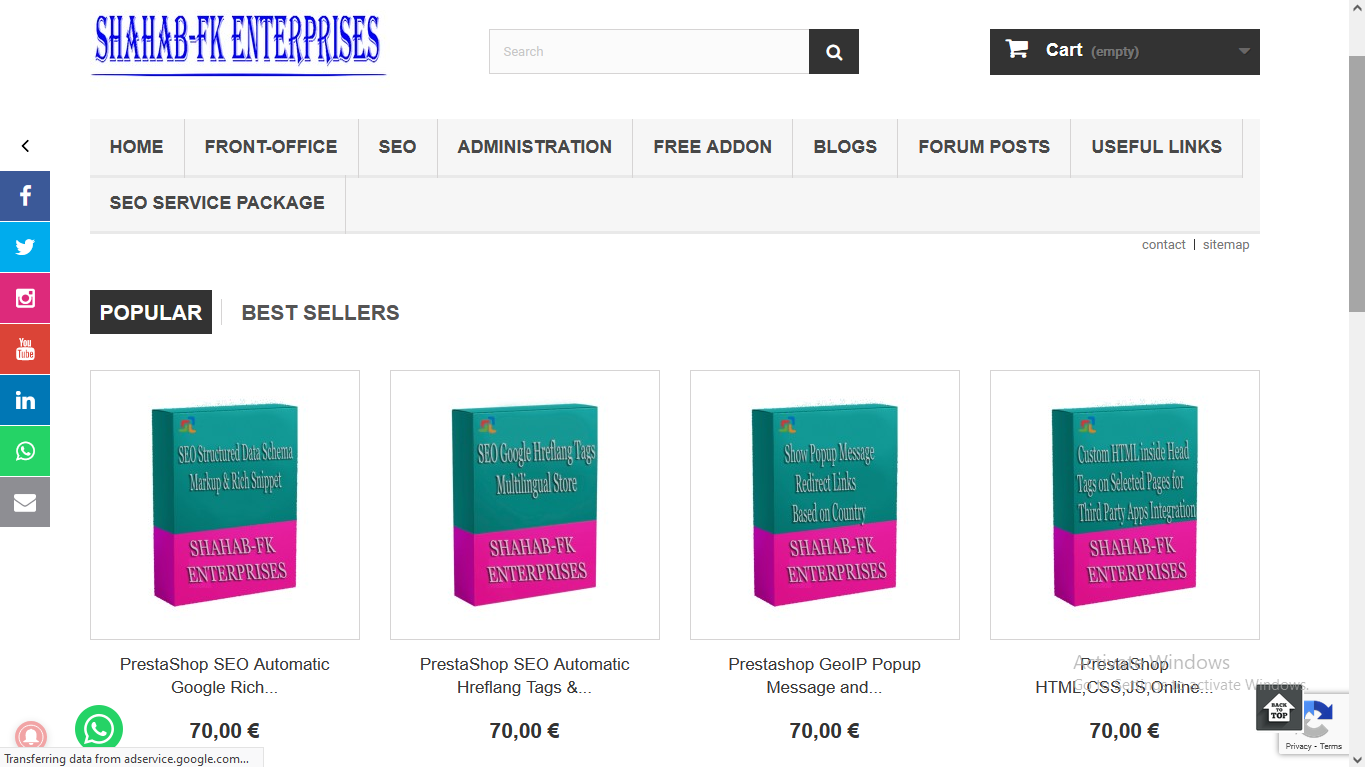Search Engine Optimization (SEO) is crucial for improving the visibility of your PrestaShop e-commerce store in search engine results pages, attracting more organic traffic, and ultimately increasing sales. Here are some key SEO tips and best practices for PrestaShop:
- Keyword Research:
- Start with thorough keyword research to identify the terms and phrases your target audience is likely to use when searching for products you offer.
- Optimize Product Pages:
- Use relevant keywords in product titles, descriptions, and meta tags (meta titles and meta descriptions).
- Create unique and compelling product descriptions.
- Utilize high-quality images with descriptive alt text.
- Implement clean and SEO-friendly URLs for product pages.
- Create High-Quality Content:
- Maintain a blog or informative content section to provide value to your audience and improve your site’s authority.
- Write blog posts and articles related to your products and industry.
- Use internal linking to connect your product pages with relevant blog posts.
- Optimize Category Pages:
- Write unique and informative category descriptions.
- Use keywords in category names and descriptions.
- Implement breadcrumb navigation to improve the user experience and help search engines understand your site structure.
- User-Friendly Navigation:
- Ensure your site is easy to navigate with clear menu structures and an intuitive layout.
- Use breadcrumbs, filters, and sorting options to enhance the user experience.
- Mobile Optimization:
- Ensure your PrestaShop store is mobile-responsive. Google prioritizes mobile-friendly websites in search rankings.
- Page Speed:
- Optimize your site’s loading speed. Faster sites tend to rank better in search results.
- Compress images and use caching to reduce loading times.
- Secure Your Site:
- Use HTTPS to secure your website. Secure sites are preferred by search engines.
- Social Media Integration:
- Connect your PrestaShop store with your social media profiles. Social signals can indirectly impact search rankings.
- Structured Data (Schema Markup):
- Implement schema markup to provide search engines with additional information about your products, such as price, availability, and reviews. This can lead to rich search results.
- Canonical URLs:
- Use canonical tags to prevent duplicate content issues. This helps search engines understand which version of a page to index.
- XML Sitemap:
- Ensure your PrestaShop store has an XML sitemap that lists all your pages. Submit this sitemap to Google Search Console to help search engines discover and index your content.
- Robots.txt:
- Review and configure your
robots.txtfile to control which pages search engines can and cannot crawl.
- Review and configure your
- Monitor and Analyze:
- Use tools like Google Analytics and Google Search Console to monitor your website’s performance, identify issues, and track your SEO efforts.
- Backlinks and Off-Page SEO:
- Develop a backlink strategy to acquire high-quality inbound links from reputable websites in your industry.
- Local SEO (if applicable):
- If you have a physical store, optimize your website for local SEO. Create a Google My Business listing and encourage customer reviews.
- Stay Up-to-Date:
- SEO is an ever-evolving field. Stay current with search engine algorithm updates and adapt your strategy accordingly.
PrestaShop offers various SEO-related features and settings in its admin panel. Utilize these features to customize your site’s SEO settings to align with the best practices mentioned above. Additionally, you can use SEO plugins and modules to enhance your SEO efforts within the PrestaShop ecosystem.

